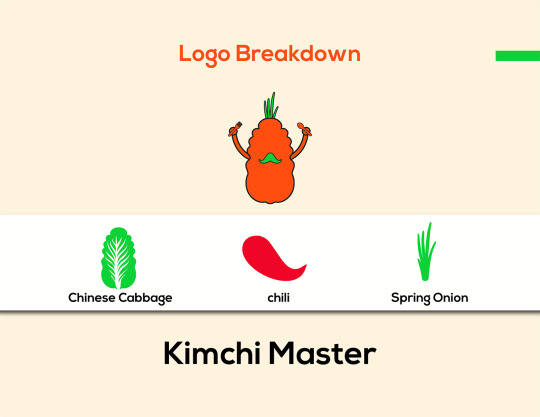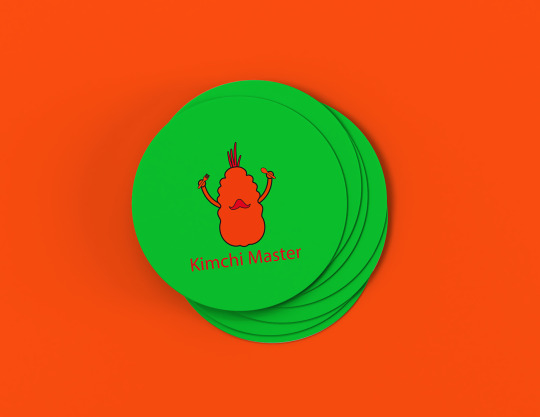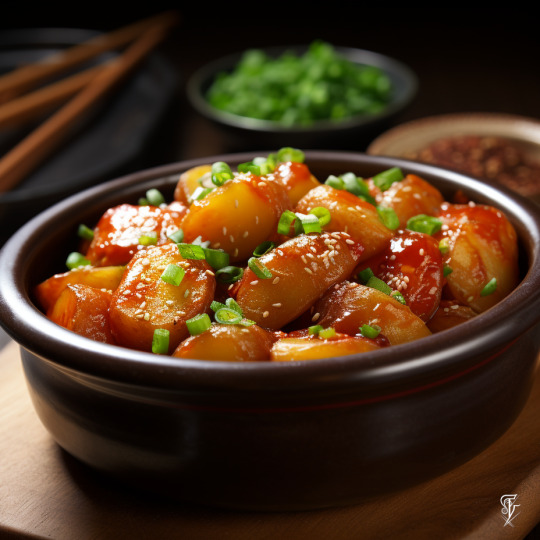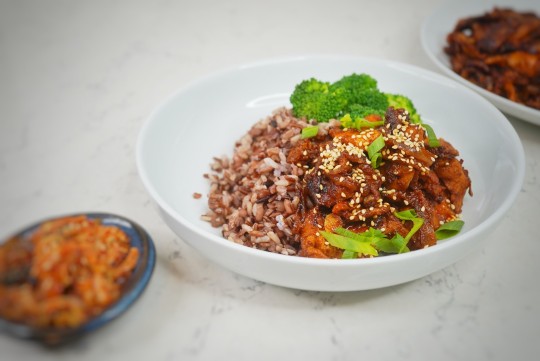#Koreanfood
Text


姉の家に帰る途中、香港飯店0140で夕食。
随分前に新大久保にできてから行ってみようと思っていたけど、今回が初。
香港飯店0410ウジャンサン駅店
서울 강서구 강서로45길 14
https://naver.me/IFFqKfeO
20240615
#food#japan#foodporn#foods#foodgasm#food photography#foodstagram#noodle#ジャジャン麺#タンスユク#koreanfood#korea#韓国#韓国料理
10 notes
·
View notes
Photo

Easy Soondubu Jjigae Recipe (Spicy Korean Soft Tofu Stew)
This Soondubu Jjigae recipe will give you a delicious and easy Korean spicy soft tofu stew made with an anchovy broth. It’s loaded with pork and shrimp for the best kind of comfort food out there! If you’ve always wanted to make a delicious Korean dish, then this is the one you need to try!
20 notes
·
View notes
Text
📍Jinju Hoegwan 진주회관
#진주회관#콩국수#Kongguksu#Noodles#Seoul#서울#fypシ#Travel#southkorea#Koreanfood#Foodie#meat#koreatravel#SeoulTravel#mustsee#aesthetics#touristattraction#SeoulTrip#KoreaVlog#minivlog#SeoulVlog#korea#Fun
4 notes
·
View notes
Text
마포동 맛있는 곰탕 도화정 - https://koreafood.tistory.com/m/400
2 notes
·
View notes
Text

🇰🇷South Korea meets 🇺🇸USA! Crispy Chili Fried Egg over Creamy Gochujang Macaroni. Made with my amazing mother!
#gochujang#koreanfood#korean food#gochujang pasta#gochujangpasta#korean pasta#koreanpasta#macandcheese#mac and cheese#spicymacandcheese#spicy mac and cheese#macaroni and cheese#macaroni#macaroniandcheese#spicymacaroniandcheese#spicy macaroni and cheese#gochujang mac and cheese#gochujangmacandcheese#koreanmacandcheese#korean mac and cheese#korean macaroni and cheese#american food#americanfood#american cuisine#americancuisine#korean cuisine#koreancuisine#comfort food#comfortfood#delicious
52 notes
·
View notes
Text




My cousin treated me to Korean BBQ in Rowland heights, CA.
Such a great meal.
16 notes
·
View notes
Text
youtube
Korean spicy soft tofu stew with seafood (Haemul sundubu-jjigae: 해물 순두부찌개)
Ingredients (for 2 servings)
¼ cup gochugaru (Korean hot pepper flakes)
2 teaspoons toasted sesame oil
¼ teaspoon ground black pepper
1 tablespoon vegetable oil
2 garlic cloves, minced
¼ cup (about 1 ounce) chopped onion
1 large king oyster mushroom (or ½ cup of any mushrooms), chopped
1 large green onion (dae-pa) or 2 green onions, the white part and green part separated and chopped
2½ cups anchovy kelp stock (or vegetable stock, or beef or chicken broth)
2 tablespoons fish sauce (or salt to your taste)
2 tubes soft tofu (or 22 ounces silken tofu)
2 to 3 large deveined shrimp in the shell, rinsed
6 fresh shucked or shucked frozen oysters, rinsed
4 to 6 fresh mussels, cleaned and rinsed
2 eggs
Directions
Combine the hot pepper flakes, sesame oil, and black pepper in a small bowl. Mix well with a spoon until the hot pepper flakes absorb all the oil. Set aside.
Heat the vegetable oil in a large saucepan over medium-high heat. Add the onion, garlic, the chopped white part of the green onion, and mushroom. Stir with a wooden spoon until the onion and garlic are slightly brown and crispy, 2 to 3 minutes. Add the stock. Cover and cook for 5 to 6 minutes, until it’s boiling vigorously.
Add shrimp, oysters, and mussels. Cut the tubes of tofu in half and squeeze them into the boiling stew, and then break up the tofu a bit with a wooden spoon. If using silken tofu, scoop or squeeze from the box into the stew.
Add the fish sauce (or salt to your taste), half of the hot pepper mixture, and stir a few times.
Cover and cook for 5 to 6 minutes, until the seafood is fully cooked and the broth is infused with its savory flavor.
2 ways to serve:
Serve in Korean earthenware bowls:
Ladle the stew into 2 earthenware bowls (2½ cup bowls work best) and place them on the stove top. Heat them up over high heat. Add the leftover seasoning mixture on top of the stew in each bowl.
When the stews starts bubbling, crack the eggs into each bowl. Cook for another minute until vigorously boiling. Remove from the heat and sprinkle the green part of the chopped green onion over top.
Serve right away while it’s bubbling, with rice, kimchi, and more side dishes on the side.
Serve in regular soup bowls:
Add the second half of the seasoning mixture to the boiling stew in the pot and mix it in a bit. Carefully crack the eggs into the bubbling stew, and cook for 1 or 2 minutes until the eggs are slightly (or half) cooked. Remove from the heat.
Gently ladle the stew into two soup bowls without disturbing the eggs. Scoop up each egg and place one in each bowl.
Sprinkle the green part of the chopped green onion over top and serve right away with rice, kimchi, and more side dishes.
#koreanfood#kbbq#kfood#korean#food#foodie#recipe#bts#rm#jin#suga#jhope#v#kimchi#video#jimin#jungkook#in the soop#Youtube
8 notes
·
View notes
Text










Kimchi Logo Branding Design
► Check Complete Branding Design: https://www.behance.net/gallery/185403679/Kimchi-Logo-Brand-Identity-Restaurant-Visual-Identity
#food#foodie#foodlover#restaurants#kimchi#fastfood#foodtruck#traditionalfood#bbq#cafe#branding#brandidentity#design#logo#logodesigner#graphicdesigner#viralpost#trendingpost#letsgroit#koreanfood#chinesefood
2 notes
·
View notes
Text

Gamja Jorim - koreanische gekochte Bratkartoffeln !
Rohe Kartoffeln zuerst anbraten, und dann in einer würzigen Soja-Honig-Sauce fertigkochen.
Viel Spaß mit #veda_food !
#foodporn#food#fastfood#gesund#aiart#kartoffel#kartoffeln#braten#backen#grillen#kochen#frittieren#gamjajorim#korea#koreanfood#WorldOfVeda#veda_food
6 notes
·
View notes
Text

久しぶりの韓国帰省での最後の食事は、
仁川国際空港のフードコートのCHIMAC HUNTER。
フライト時間が迫ってるのに、なかなか出来上がらなくてソワソワした!
20240617
#food#japan#foodporn#foods#foodgasm#food photography#foodstagram#airport#korea#koreanfood#フライドチキン#fried chicken#韓国#韓国料理
6 notes
·
View notes
Text
CHEF ILONA: JEYUK BOKKEUM

Stir frying the Bokkeum way
Exploring the cooking techniques found in Korean cuisine
What is bokkeum? It is the Korean method to cook food or food ingredients with little or a small amount of liquid by stir-frying over heat.
Origins
The origins of jeyuk (jeyuk is the Korean word for pork) bokkeum can be traced back to the Joseon Dynasty in Korea, which lasted from the late 14th century to the late 19th century. During this time, meat dishes were relatively rare in Korea due to Confucian dietary restrictions that encouraged vegetarianism. However, pork was more commonly consumed in Korea than other meats because pigs were easy to raise and provided a reliable source of protein.
The modern version of jeyuk bokkeum, as we know it today, likely began to take shape during the 20th century. With the introduction of chili peppers and other new ingredients, Korean cuisine started to evolve, incorporating spicier and more flavorful elements into traditional dishes.

All about that spice
Jeyuk bokkeum is usually made with a combination of gochujang and gochugaru.
Gochugaru is a coarsely ground Korean chili powder similar to crushed red pepper flakes in texture, traditionally made from sun-dried peppers without the seeds.
Gochujang or red chili paste is a savory, sweet, and spicy fermented condiment popular in Korean cooking. It’s primary constituents are gochugaru, glutinous rice, and salt. The sweetness comes from the starch of cooked glutinous rice, cultured with saccharifying enzymes during the fermentation process.
Though the application of chilies in this dish comes two-fold, yet the dish isn’t nearly as spicy as you might think. And of course, you can always adjust the heat level to your taste. You can omit gochugaru if you like it less spicy or add more to make it spicier.

Why marinating matters
The technique of marinating meat in Korean cuisine, known as "bulgogi," dates back centuries. The term "bulgogi" means "fire meat," and it originally referred to beef dishes. Over time, this marinating and grilling technique was adapted for various meats, including pork, leading to the creation of “jeyuk bokkeum."
Jeyuk bokkeum gained popularity in South Korea as a delicious and affordable street food option. It's known for its spicy and savory flavors, making it a favorite among many Koreans. It can be found in restaurants and homes throughout South Korea
This dish can be served in ssam, lettuce wraps alongside other dishes, or it can be enjoyed with rice and some additional vegetables. If you happen to have some kimchi, this would be a great accoutrement to enjoy with the pork.
The dish's history reflects the adaptability and creativity of Korean cuisine, where traditional ingredients and techniques are combined with new flavors and ingredients to create delicious and distinctive dishes like jeyuk bokkeum.
Jeyuk Bokkeum
Adapted
Serves 6
1 ½ pound pork loin (pork belly is traditional- if you use belly increase cooking time to 12-15 minutes) cut into bite size pieces (1/8 inch thick)
¼ cup gochujang
2 tablespoon soy sauce
1 tablespoon dark soy sauce
2 tablespoons brown sugar
2 tablespoons gochugaru
½ teaspoon ground black pepper
1 tablespoon toasted sesame oil
5 garlic cloves, minced
1 tablespoon ginger, minced
1 medium size onion, sliced
4 green onions, sliced
1 teaspoon toasted sesame seeds
Add all the marinade ingredients into a bowl with the pork along with the onions and green onions.
Mix everything together until fully combined.
Marinate the pork in the fridge for at least 30 minutes, but overnight is best.
To cook, heat a heavy bottomed pan, or preferable in a large cast-iron skillet, cook the marinated pork (in 2 batches if you have a small pan).
Fight the temptation to start moving the meat around in the pan the moment is touches it. It is important to allow the pork to sear and become caramelized. Leave it for 30 seconds and stir. Repeat the process until the pork is cooked.
#pei#chefilona#eastcoast#canadianchef#eater#cbcpei#chefsofinstagram#yum#explorecanada#foodwriter#koreanfood#jeyukbokkeum#gochugaru#gochujang
2 notes
·
View notes
Link
2 notes
·
View notes
Text
📍 Cheongnyeon Buckwheat Noodles 청년모밀
#맛집#Foodie#청년모밀#먹스타그램#Foodstagram#떡볶이맛집#noodles#맛있다#Delicious#음식스타그램#Foodgram#맛집추#Restaurant#Recommendation#buckweathnoodles#먹방#Mukbang#먹부림#Food#korea#koreanfood#koreatrip#seoul#seoultravelguide#seoultravel#koreatravel#fyp
3 notes
·
View notes
Text

the taste of Kaylee is such sweet, lethal delight. when i tasted her.. i knew i had been starving. 🥰🥰
#
#koreangirl#koreanfashion#koreanfood#korean#losangeles#hot asian babe#asian#korean style#vogue korea
12 notes
·
View notes
Text
Bulgogi Egg Rolls and New West KnifeWorks Giveaway

Craving some Korean flavors? These mouthwatering Bulgogi Egg Rolls are to die for. Plus, we're teaming up with New West KnifeWorks to give you a chance to win some top-notch knives. Join our giveaway today.
4 notes
·
View notes
